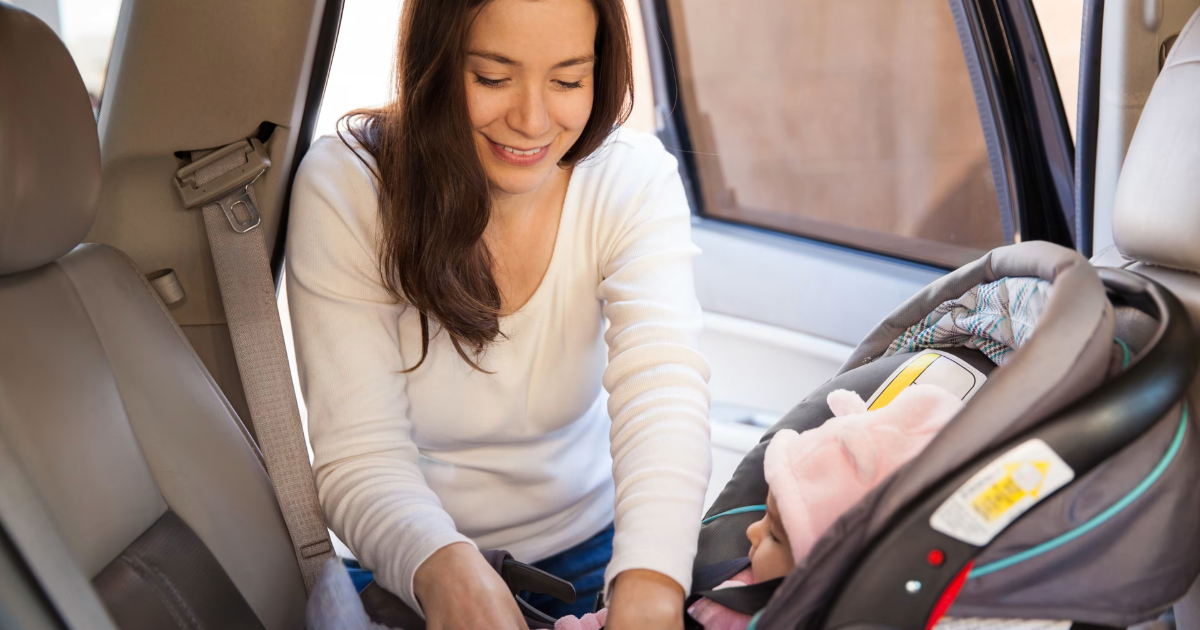When it comes to car seat safety, ISOFIX is a term you’ll frequently come across. It’s a globally standardized system for securely attaching car seats in vehicles, designed to reduce the risks of incorrect installation and enhance safety for young passengers. With ISOFIX, car seats are anchored directly to the vehicle’s chassis, making the installation process both simpler and more secure. Here’s a complete look at what ISOFIX is, how it works, and why it’s an important feature for car seats.
What is ISOFIX?
ISOFIX (International Standards Organisation FIX) is a standardized method of fitting child car seats into vehicles without using seat belts. Instead, ISOFIX car seats come with built-in connectors that latch onto corresponding anchor points located in the vehicle’s seats. These anchors are typically found in the back seats of newer vehicles and connect directly to the car’s frame, providing a stable, secure attachment that reduces the risk of car seat movement in the event of an accident.
The ISOFIX system was developed to make car seat installation safer and simpler by ensuring that the seat is properly attached, reducing the chance of improper installation—one of the main causes of child passenger injuries.
How Does ISOFIX Work?
ISOFIX uses metal connectors on the car seat base that click into anchorage points embedded in the car’s seats. When installed correctly, these connectors secure the car seat in place, making it more stable and resistant to movement.
Key Components of ISOFIX
- ISOFIX Base or Connectors: Metal connectors on the car seat that attach to the car’s anchor points.
- Top Tether or Support Leg: In addition to the main connectors, ISOFIX seats often have a third anchoring point, either a top tether (strap that connects to an anchor point behind the seat) or a support leg (an adjustable leg that extends to the car’s floor). This extra point of contact prevents forward movement in case of a collision.
- Indicators: Many ISOFIX car seats include indicators, often colored green and red, to show whether the seat is installed correctly or not.
ISOFIX Installation Steps
- Locate the ISOFIX anchor points in the car seat, usually marked with a symbol on the back seats.
- Position the car seat connectors over the anchor points, then push until you hear a “click.”
- Secure the top tether or support leg, if required. The tether or support leg stabilizes the seat, preventing forward and backward movement.
The system makes it easy for parents to install and uninstall car seats without relying on seat belts, which can be complex and prone to error.
Benefits of ISOFIX
ISOFIX has become a standard feature for car seats in many parts of the world due to its safety, convenience, and ease of use. Here are some key benefits:
1. Reduced Risk of Incorrect Installation
Studies show that a significant percentage of car seats installed with seat belts are incorrectly fitted, putting children at risk. ISOFIX helps eliminate installation errors by providing a clear, simple way to secure the car seat.
2. Enhanced Safety
ISOFIX seats are anchored directly to the car’s frame, creating a more stable installation that minimizes seat movement during a crash. This secure attachment reduces forward momentum and provides better protection for the child.
3. Quick and Easy Installation
ISOFIX is designed to “click” into place, making it quicker and easier than traditional seat belt installations. The connectors lock into the car’s anchor points, making installation nearly foolproof.
4. Reassuring Indicators
Many ISOFIX car seats come with visual indicators to show if the seat is properly secured. This gives parents peace of mind, knowing that their child’s seat is correctly installed.
Is My Car Compatible with ISOFIX?
ISOFIX has become standard in most vehicles manufactured after 2006 in the U.S. and Europe. If you’re unsure whether your vehicle has ISOFIX, check the car manual or look for metal anchor points at the base of the back seat, typically marked with a small ISOFIX label or icon. Some vehicles might also call it LATCH (Lower Anchors and Tethers for Children) in the United States, though this system has slight differences in setup.
Top Tether vs. Support Leg: Additional Safety Points
ISOFIX seats often have a third anchoring point to prevent forward movement, which can be either a top tether or a support leg.
- Top Tether: This is a strap attached to the top of the car seat, which secures to an anchor point behind the car seat (usually on the back of the vehicle’s seat, on the floor, or the ceiling).
- Support Leg: An adjustable leg that extends from the base of the car seat to the car’s floor, adding stability and reducing forward movement.
Both options offer increased stability, but it’s essential to follow your car seat’s instructions to ensure correct use.
ISOFIX vs. Seat Belt Installation: Which is Safer?
Both ISOFIX and seat belt installations can be safe when done correctly. However, ISOFIX reduces the risk of incorrect installation, which is a common issue with seat belts. ISOFIX is generally considered more secure for inexperienced users because of its straightforward, click-in mechanism. However, a correctly installed seat belt is also very safe, especially in vehicles that may not have ISOFIX compatibility.

Leave a Reply